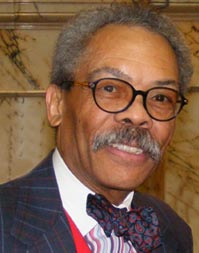Related Research Articles

The civil rights movement was a nonviolent social movement and campaign from 1954 to 1968 in the United States to abolish legalized racial segregation, discrimination, and disenfranchisement throughout the United States. The movement had its origins in the Reconstruction era during the late 19th century and had its modern roots in the 1940s, although the movement made its largest legislative gains in the 1960s after years of direct actions and grassroots protests. The social movement's major nonviolent resistance and civil disobedience campaigns eventually secured new protections in federal law for the civil rights of all Americans.
Desegregation is the process of ending the separation of two groups, usually referring to races. Desegregation is typically measured by the index of dissimilarity, allowing researchers to determine whether desegregation efforts are having impact on the settlement patterns of various groups. This is most commonly used in reference to the United States. Desegregation was long a focus of the American civil rights movement, both before and after the US Supreme Court's decision in Brown v. Board of Education, particularly desegregation of the school systems and the military. Racial integration of society was a closely related goal.

Race-integration busing in the United States was the practice of assigning and transporting students to schools within or outside their local school districts in an effort to diversify the racial make-up of schools. While the 1954 U.S. Supreme Court landmark decision in Brown v. Board of Education declared racial segregation in public schools unconstitutional, many American schools continued to remain largely uni-racial due to housing inequality. In an effort to address the ongoing de facto segregation in schools, the 1971 Supreme Court decision, Swann v. Charlotte-Mecklenburg Board of Education, ruled that the federal courts could use busing as a further integration tool to achieve racial balance.
Racial equality is when people of all races and ethnicities are treated in an egalitarian/equal manner. Racial equality occurs when institutions give individuals legal, moral, and political rights. In present-day Western society, equality among races continues to become normative. Prior to the early 1960s, attaining equality was difficult for African, Asian, and Indigenous people. However, in more recent years, legislation is being passed ensuring that all individuals receive equal opportunities in treatment, education, employment, and other areas of life.

Racial integration, or simply integration, includes desegregation, leveling barriers to association, creating equal opportunity regardless of race, and the development of a culture that draws on diverse traditions, rather than merely bringing a racial minority into the majority culture. Desegregation is largely a legal matter, integration largely a social one.

Robert Mack Bell is an American lawyer and jurist from Baltimore, Maryland. From 1996 to 2013, he served as Chief Judge on the Maryland Court of Appeals, now known as the Supreme Court of Maryland, the state's highest appellate court. He was the first African American to hold the position.
Racial steering refers to the practice in which real estate brokers guide prospective home buyers towards or away from certain neighborhoods based on their race. The term is used in the context of de facto residential segregation in the United States, and is often divided into two broad classes of conduct:
- Advising customers to purchase homes in particular neighborhoods on the basis of race.
- Failing, on the basis of race, to show, or to inform buyers of homes that meet their specifications.
Gloria Richardson Dandridge was an American civil rights activist best known as the leader of the Cambridge movement, a civil rights action in the early 1960s in Cambridge, Maryland, on the Eastern Shore. Recognized as a major figure in the Civil Rights Movement, she was one of the signatories to "The Treaty of Cambridge", signed in July 1963 with Attorney General Robert F. Kennedy, and state and local officials. It was an effort at reconciliation and commitment to change after a riot the month before.
The Women's Political Council (WPC), founded in Montgomery, Alabama, was an organization that formed in 1946 that was an early force active in the civil rights movement that was formed to address the racial issues in the city. Members included Mary Fair Burks, Jo Ann Robinson, Maude Ballou, Irene West, Thelma Glass, and Euretta Adair.
Murray v. Pearson was a Maryland Court of Appeals decision which found "the state has undertaken the function of education in the law, but has omitted students of one race from the only adequate provision made for it, and omitted them solely because of their color." On January 15, 1936, the court affirmed the lower court ruling which ordered the university to immediately integrate its student population, and therefore created a legal precedent making segregation in Maryland illegal.
Desegregation of the Baltimore City Public Schools took place in 1956 after the United States Supreme Court ruled, in the case of Brown v. Board of Education, that segregation in schools went against constitutional law. Desegregation of U.S. schools was part of the civil rights movement. The events that followed desegregation in Baltimore, were important to the civil rights movement across America. Recent scholarship has identified Baltimore's desegregation as an important precursor to the Greensboro sit-ins.
Ford's Grand Opera House was a major music venue in Baltimore, Maryland, located on West Fayette Street between North Howard and Eutaw Streets. It was founded by theatre manager John T. Ford and designed by architect James J. Gifford. The opera house/theatre opened to the public on October 2, 1871, with a show that included readings from Shakespeare's "As You Like It" as well as vocal and orchestral performances. Then owned by 1950s–60s era theatre magnate Morris A. Mechanic, it closed almost 93 years later with its last Broadway show from New York City, "Something Funny Happened on the Way to the Forum" in 1964. It was replaced three years later as the prime site for Baltimore live theatre patrons with the opening in the landmark of the new downtown redevelopment project of Charles Center, the starkly modernistic "Brutalist" architecture of the Morris A. Mechanic Theatre at the southwest corner of Charles and Baltimore Streets, four blocks to the east.
Bell v. Maryland, 378 U.S. 226 (1964), provided an opportunity for the Supreme Court of the United States to determine whether racial discrimination in the provision of public accommodations by a privately owned restaurant violated the Equal Protection and Due Process Clauses of the 14th Amendment to the United States Constitution. However, due to a supervening change in the state law, the Court vacated the judgment of the Maryland Court of Appeals and remanded the case to allow that court to determine whether the convictions for criminal trespass of twelve African American students should be dismissed.

Black schools, also referred to as "colored schools", were racially segregated schools in the United States that originated after the American Civil War and Reconstruction era. The phenomenon began in the late 1860s during Reconstruction, when Southern states under biracial Republican governments created public schools for the formerly enslaved. They were typically segregated. After 1877, conservative whites took control across the South. They continued the black schools, but at a much lower funding rate than white schools.

The Southern Regional Council (SRC) is a reform-oriented organization created in 1944 to avoid racial violence and promote racial equality in the Southern United States. Voter registration and political-awareness campaigns are used toward this end. The SRC evolved in 1944 from the Commission on Interracial Cooperation. It is headquartered in Atlanta, Georgia.
The Cambridge riot of 1967 was one of 159 race riots that swept cities in the United States during the "Long Hot Summer of 1967". This riot occurred on July 24, 1967 in Cambridge, Maryland, a county seat on the Eastern Shore. For years racial tension had been high in Cambridge, where black people had been limited to second-class status. Activists had conducted protests since 1961, and there was a riot in June 1963 after the governor imposed martial law. "The Treaty of Cambridge" was negotiated among federal, state, and local leaders in July 1963, initiating integration in the city prior to passage of federal civil rights laws.

In the United States, school integration is the process of ending race-based segregation within American public and private schools. Racial segregation in schools existed throughout most of American history and remains an issue in contemporary education. During the Civil Rights Movement school integration became a priority, but since then de facto segregation has again become prevalent.
Bernice Smith White was an American community worker, civic leader, and a leader for equal rights for women. She was educated in Baltimore City Public Schools and received her bachelor's degree in education from Coppin State College. She also studied political science, government, personnel management, behavioral aspects of management, labor relations, and equal opportunity at Morgan State University, the Community College of Baltimore, George Washington University, the University of Maryland, and Fisk University. She taught in the Baltimore school system for about 12 years. In the Baltimore Urban League she worked as a volunteer in programs to provide job opportunities for youths.
Ellen Garrison Jackson Clark was an African American educator, abolitionist and early Civil Rights activist, whose defiance of "whites only" social spaces has been compared to Rosa Parks' actions in the 20th century. After decades spent crisscrossing the East Coast, the South and Midwest in the service of teaching literacy, Clark eventually settled in Pasadena, California for health reasons. She was buried in an unmarked grave in Altadena. In 2021, the Altadena Historical Society successfully lobbied to provide Clark's grave with a memorial headstone.

Margaret Briggs Gregory Hawkins, worked as a schoolteacher and later became known for her activism on behalf of African Americans and women. She was inducted into the Maryland Women's Hall of Fame in 2021.
References
- 1 2 3 Maryland Historical Society: Sidney Hollander Collection 1926-1972
- 1 2 Howard University, Preserving the Legacy of the Black Experience Archived 2008-12-31 at the Wayback Machine
- ↑ "The Hollander Award," Evening Sun (Baltimore,) December 4, 1964